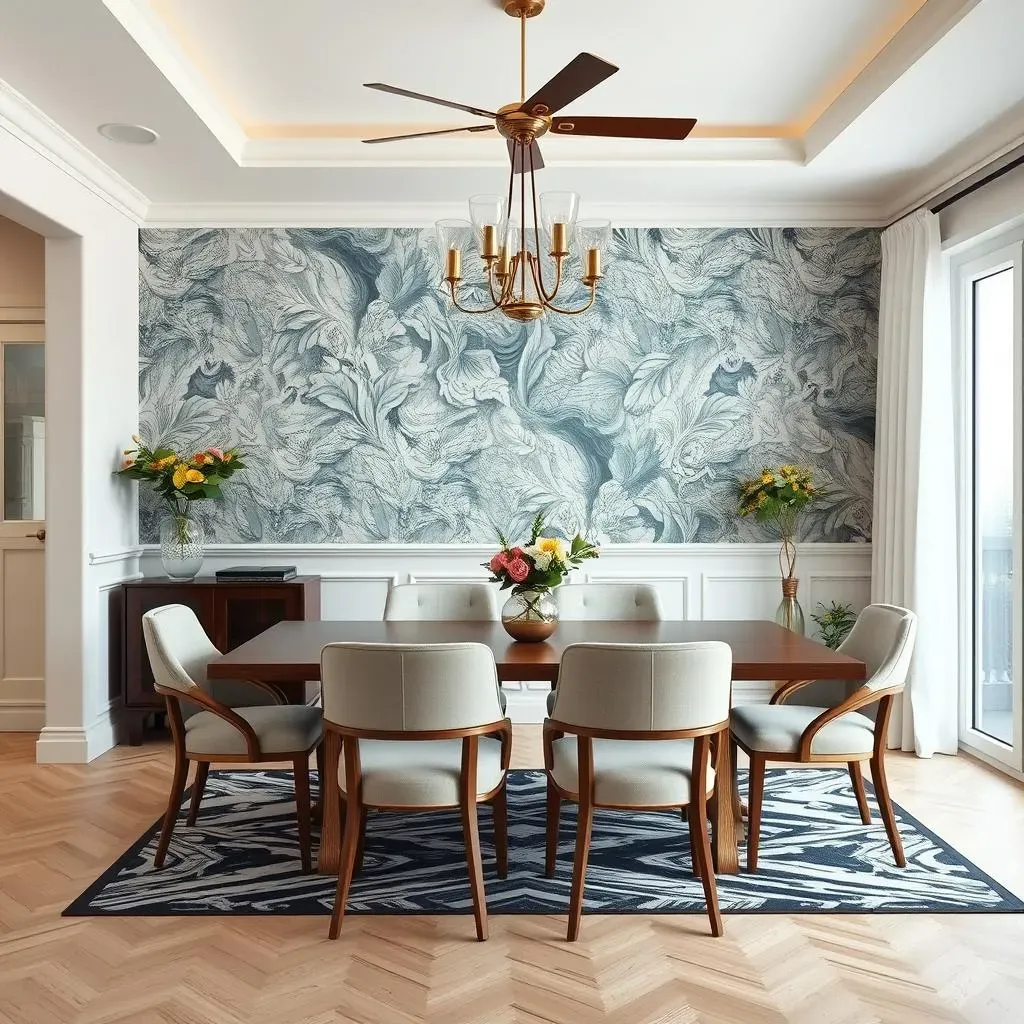Table of Contents
Dreaming of a stunning dining room but worried about the cost? You're not alone! Many people think a dramatic makeover requires a hefty price tag, but creating a show-stopping dining room accent wall doesn't have to break the bank. This article is your guide to unlocking amazing "dining room accent wall ideas on a budget." We'll walk you through selecting the perfect wall, exploring affordable materials like paint and wallpaper, and diving into simple DIY projects you can easily tackle yourself. Get ready to unleash your creativity and transform your dining space into a place where memories are made, all without emptying your wallet. We’ll cover everything from choosing the right wall to create maximum impact, to exploring budget-friendly materials and easy DIY techniques. By the end, you’ll have the confidence and know-how to create a personalized accent wall that elevates your dining room's style and charm. So, let's get started and create the dining room of your dreams!
Choosing the Perfect Wall: Location, Location, Location!
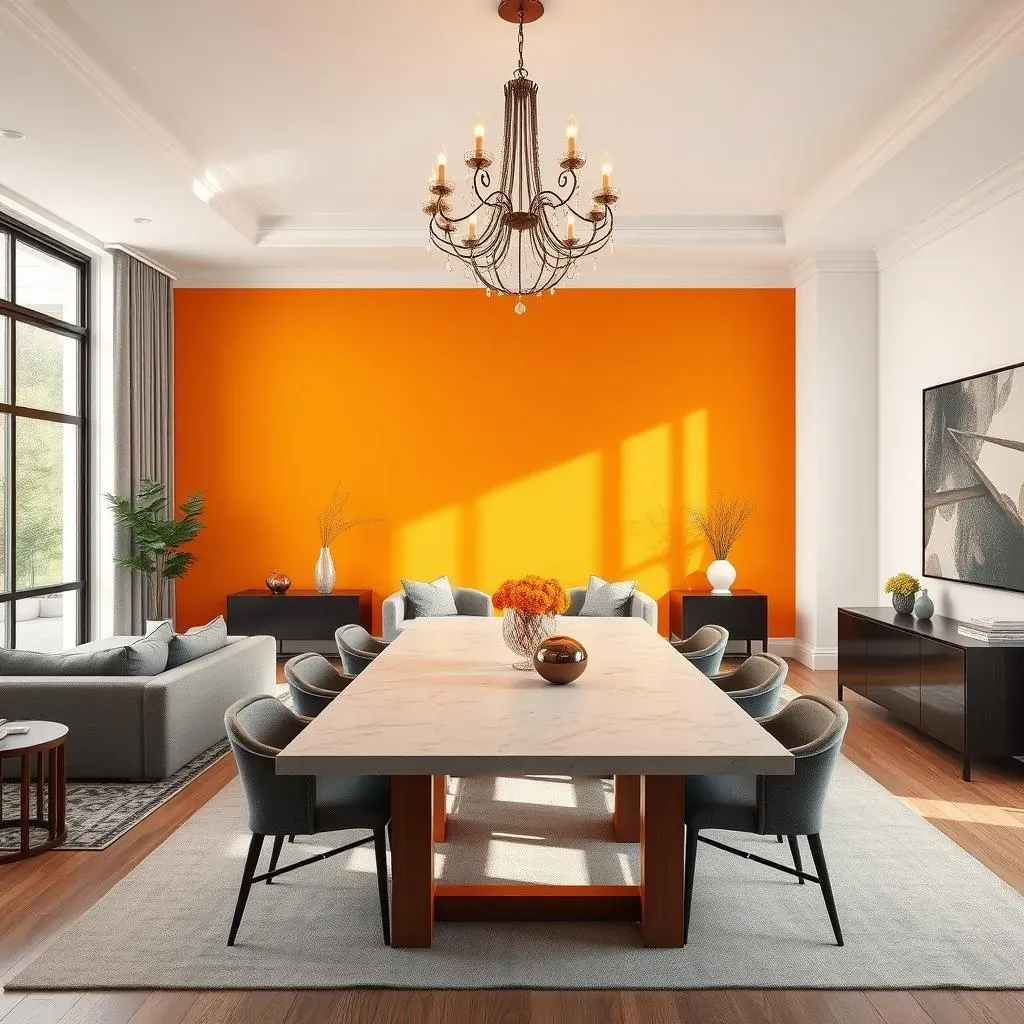
Choosing the Perfect Wall: Location, Location, Location!
The Focal Point Rule
Think of your dining room as a stage, and the accent wall as the backdrop. You want your "star" (your dining table and chairs!) to shine, so choose a wall that naturally draws the eye. Often, this is the wall that's most visible when you enter the room. This creates an immediate "wow" factor and sets the tone for the entire space. It's all about making a statement, and the right wall placement is key. Think about how you want your guests to experience the room; a well-placed accent wall will guide their gaze and create a sense of flow and purpose.
Consider the natural light in your dining room. Does a particular wall get the most sunlight? A lighter-colored accent wall might be ideal for a darker corner, while a bold color could really pop in a sun-drenched spot. For apartment dwellers, check out these apartment-friendly ideas to maximize impact in smaller spaces. Remember, the goal is to enhance the existing light and create a balanced, inviting atmosphere.
Wall Location | Pros | Cons |
|---|---|---|
Wall opposite the entrance | Creates immediate impact, focal point | May not be suitable for all room layouts |
Longest wall | Maximizes visual effect, great for patterns | Can overwhelm a small room |
Wall with a feature (fireplace, window) | Highlights existing feature, adds depth | May require more complex design |
Avoiding Design Disasters
Sometimes, the most obvious choice isn't always the best. Avoid placing your accent wall behind bulky furniture, like a large buffet or china cabinet. This can visually “block” the wall, diminishing its impact. Instead, opt for a wall that allows the accent to breathe and truly stand out. Think about the overall balance of the room; you don't want your accent wall to fight with other design elements.
Before you even think about paint or wallpaper, consider the existing architecture. Do you have any architectural details, like crown molding or built-in shelving? Working *with* these elements, rather than against them, can create a more cohesive and sophisticated look. For instance, a simple paint color might be all you need to highlight beautiful existing woodwork. A well-chosen accent wall complements your existing features, rather than competing with them. Remember, less is often more!
- Avoid placing the accent wall behind large, bulky furniture.
- Consider existing architectural details (molding, shelving).
- Think about the overall flow and balance of the room.
Beyond the Basics: Creative Considerations
Don't be afraid to think outside the box! If your dining room has an unusual shape or layout, the accent wall can be used to strategically draw attention away from quirks and create a sense of harmony. For example, a bold color on a short wall can make a long, narrow room feel more balanced. A vertical striped pattern can make low ceilings appear taller. The possibilities are endless!
Consider the style of your dining room. A modern space might benefit from a geometric accent wall, while a traditional room might call for something more classic. If you're unsure, look for inspiration online! Browse through photos of dining rooms with similar styles to yours. This is a great way to get ideas and see what works best in different settings. Remember, your accent wall should enhance your dining room’s existing personality, not clash with it. For more ideas on creating a cohesive look, check out our guide to dining room accent walls for apartments.
BudgetFriendly Materials: Paint, Wallpaper, and More
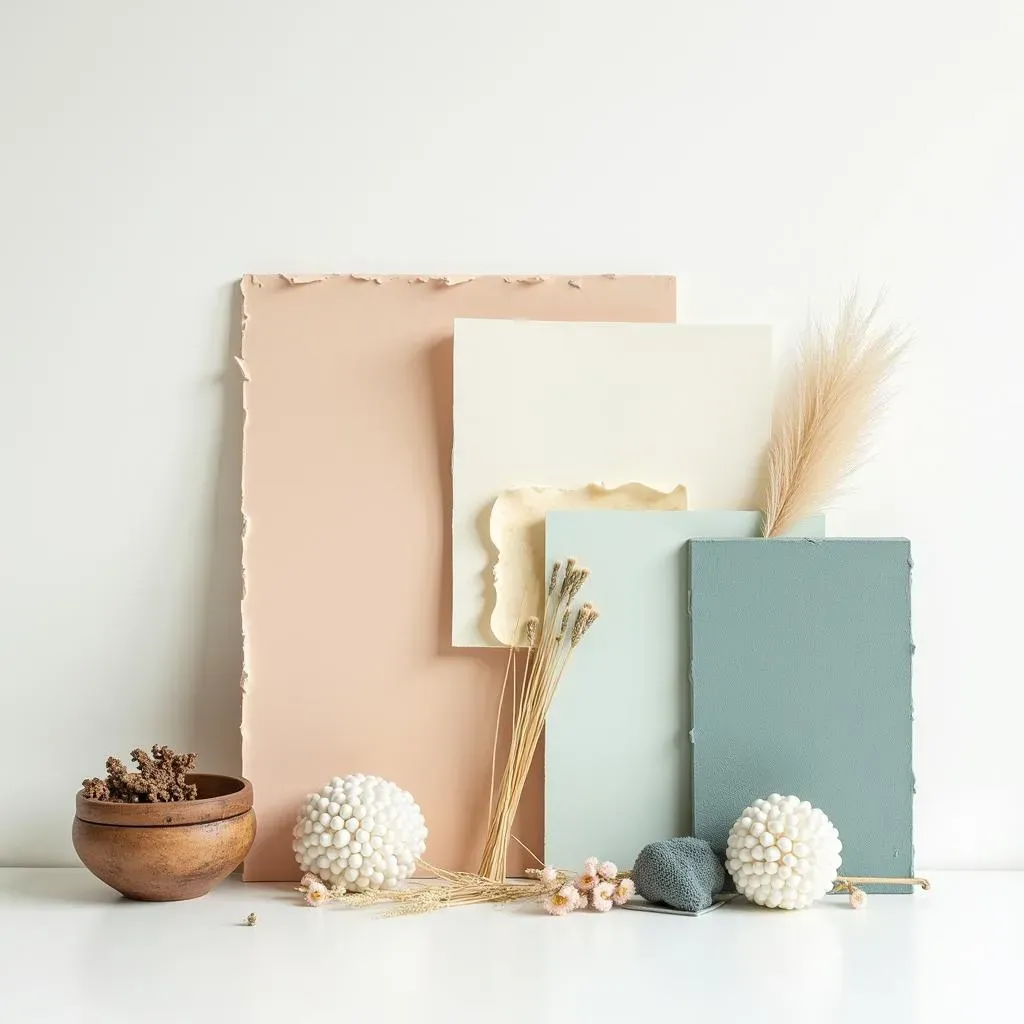
BudgetFriendly Materials: Paint, Wallpaper, and More
Paint: The Budget-Friendly MVP
Let's talk paint! It's the undisputed champion of budget-friendly accent wall materials. A gallon of paint can go a long way, and there are so many options to choose from – matte, satin, eggshell – each offering a different look and feel. You can create a dramatic, modern look with a bold color or add subtle sophistication with a muted tone. Don't forget about the power of texture; consider a textured paint for a unique, tactile element. A little paint can go a long way, and it's super easy to apply yourself, saving you even more money on labor costs. For apartment living, check out these apartment-friendly paint ideas for a fresh, updated look.
Thinking about color? Don't be afraid to experiment! A sample pot is a fantastic way to test out colors before committing to a whole gallon. Paint a small section of your chosen wall and observe how the color changes throughout the day, depending on the light. This will help you make an informed decision and prevent any post-paint regret. Remember, the goal is a color that complements your existing décor, enhancing the overall ambiance. And if you're feeling really adventurous, consider using stencils to add patterns without the expense of wallpaper!
Paint Type | Pros | Cons |
|---|---|---|
Matte | Hides imperfections, creates a soft look | Can be difficult to clean |
Satin | Easy to clean, durable | Can show imperfections |
Eggshell | Good balance of durability and washability | Moderate sheen |
Wallpaper: Adding Personality and Pattern
Wallpaper might seem expensive, but there are tons of budget-friendly options available! Look for peel-and-stick wallpaper; it's incredibly easy to apply and remove, making it perfect for renters or those who like to change things up frequently. You can find amazing designs at affordable prices, from subtle textures to bold patterns. Peel-and-stick wallpaper is a great way to add personality and visual interest to your dining room without breaking the bank. Plus, it's a fantastic option for those who aren't confident in their painting skills.
Consider using wallpaper on only a portion of your accent wall to save money. You could create a stunning feature wall by wallpapering only the area behind a buffet or console table. This creates a focal point without requiring you to cover the entire wall. For those looking for more ideas on small space solutions, our guide on accent walls for apartments offers more inspiration.
- Peel-and-stick wallpaper is easy to apply and remove.
- Use wallpaper on a portion of the wall to save money.
- Choose patterns and textures that complement your existing décor.
DIY Magic: Easy Accent Wall Projects You Can Tackle Yourself
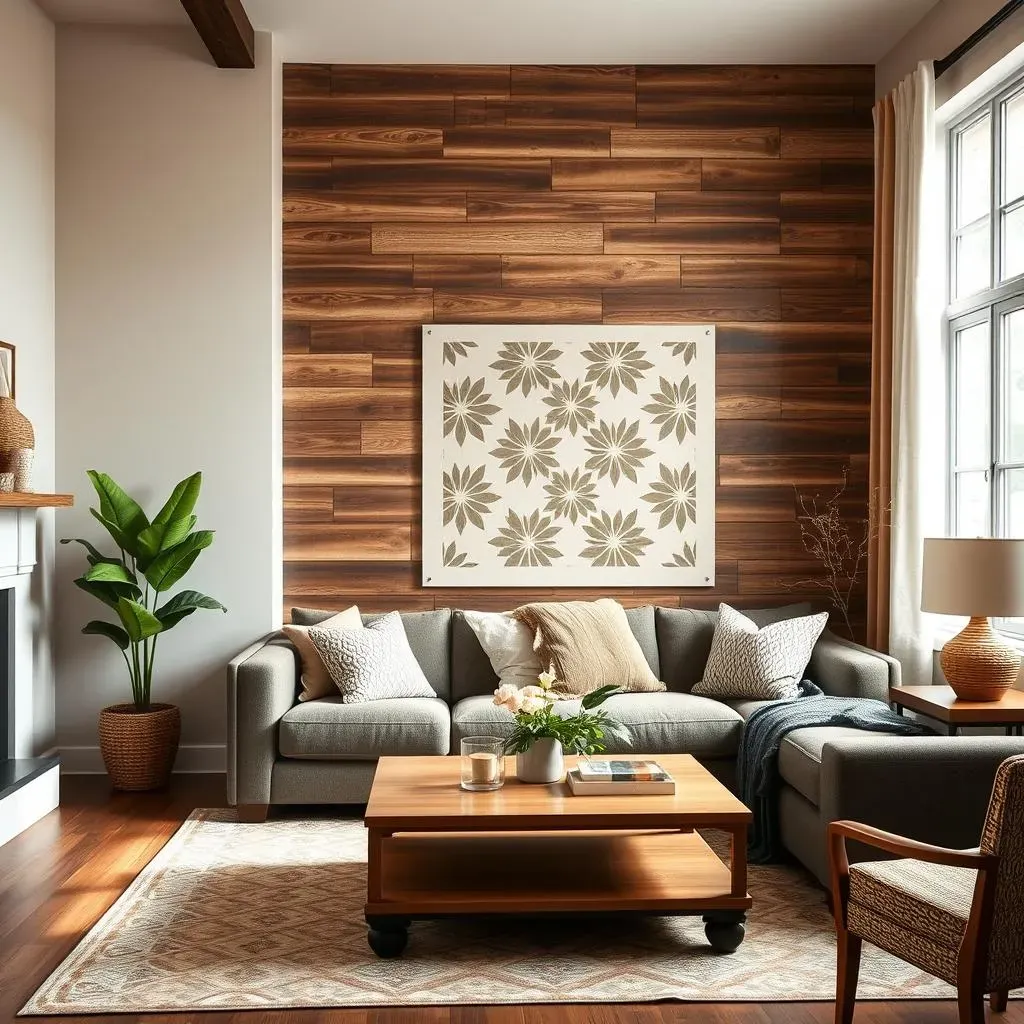
DIY Magic: Easy Accent Wall Projects You Can Tackle Yourself
Statement Walls with Stencils
Stenciling is your secret weapon for adding personality without the commitment (or cost!) of wallpaper. Grab a stencil (you can find tons of affordable options online or at craft stores), some painter's tape, and your chosen paint. Practice on a spare piece of wood or cardboard first to get the hang of it. Then, carefully tape your stencil to the wall and apply the paint using a sponge brush or roller. You can create geometric patterns, floral designs, or even your own unique creation. For smaller spaces, try using stencils to create a feature wall behind a small dining set, rather than covering the entire wall. Check out these apartment-friendly stencil ideas for inspiration.
Remember, less is more! A simple stencil design can have a huge impact, especially when paired with a contrasting paint color. Don’t be afraid to experiment with different stencil sizes and patterns to achieve the perfect look. You can even layer stencils to create more complex designs. The key is to have fun and let your creativity shine! Once you’ve mastered the basics, you can move on to more advanced techniques, like using multiple colors or creating ombre effects. The possibilities are endless!
Stencil Type | Pros | Cons |
|---|---|---|
Reusable plastic | Durable, easy to clean | Can be more expensive |
Cardboard | Affordable, disposable | Less durable |
Mylar | Thin, detailed designs | Requires careful handling |
Wood Paneling: Rustic Charm on a Dime
Want to add a touch of rustic charm to your dining room? Consider using reclaimed wood for your accent wall! You can find affordable reclaimed wood at salvage yards, flea markets, or even online marketplaces. The beauty of reclaimed wood is its unique character; each piece has its own story to tell. You can create a stunning focal point by arranging the wood planks horizontally, vertically, or even in a herringbone pattern. This is a project that requires a bit more time and effort, but the results are well worth it. For those living in apartments, consider using thinner wood planks to avoid adding too much bulk to the wall.
Before you start, make sure to measure your wall carefully and plan your layout. You’ll need to cut the wood to size and ensure that the pieces fit together snugly. If you're not comfortable using power tools, you can always enlist the help of a handy friend or family member. Once the wood is in place, simply apply a clear sealant or stain to protect the wood and enhance its natural beauty. For additional ideas on creating a rustic look, check out our guide on dining room accent walls for apartments, which focuses on maximizing space and style.
- Use reclaimed wood for a unique, rustic look.
- Plan your layout carefully and measure your wall accurately.
- Use a clear sealant or stain to protect the wood.
Styling Your Accent Wall: Pulling It All Together
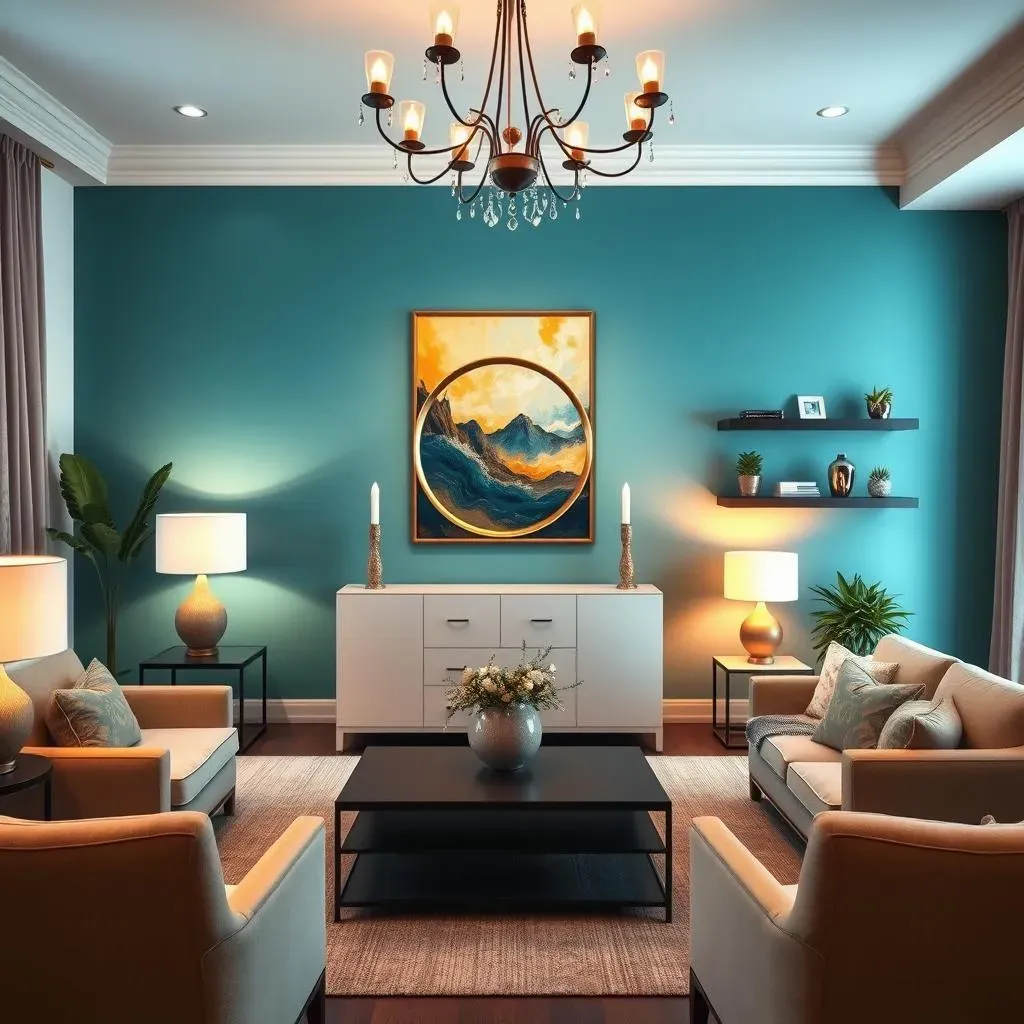
Styling Your Accent Wall: Pulling It All Together
Accessorizing Your Accent Wall
Okay, so you've got your amazing accent wall – now what? Don't just let it stand alone! Think of it as a blank canvas waiting for the perfect accessories. The key here is to avoid overwhelming the space. Remember, the goal is to enhance your existing décor, not compete with it. Start with a few key pieces that complement your wall's color and pattern. A large piece of art, a statement mirror, or even a collection of smaller framed prints can add visual interest and personality. For smaller spaces, like apartments, consider using floating shelves to add both storage and visual interest without taking up too much floor space. Check out these apartment-friendly styling ideas for more inspiration.
Lighting is crucial! The right lighting can dramatically affect how your accent wall looks. Consider adding sconces, a statement chandelier, or even a simple track lighting system. Experiment with different lighting options to find the perfect ambiance. The goal is to create a warm, inviting space that’s perfect for entertaining. Think about the overall mood you want to create; soft, ambient lighting can create a cozy atmosphere, while brighter lighting can make the space feel more energetic. Don’t forget to consider the placement of your lighting fixtures; strategically placed lights can highlight specific features of your accent wall, such as textured paint or a unique pattern.
Accessory Type | Pros | Cons |
|---|---|---|
Artwork | Adds personality, creates a focal point | Can be expensive, may require careful selection |
Mirrors | Reflect light, make the room feel larger | Can be fragile, may require careful placement |
Shelving | Adds storage, displays decorative items | Can take up space, may require careful planning |
